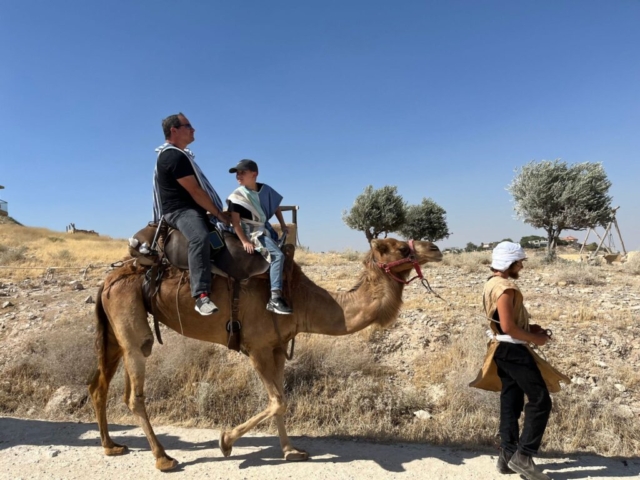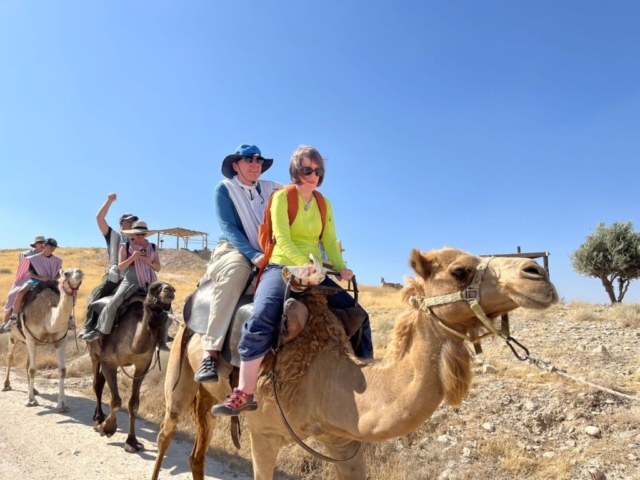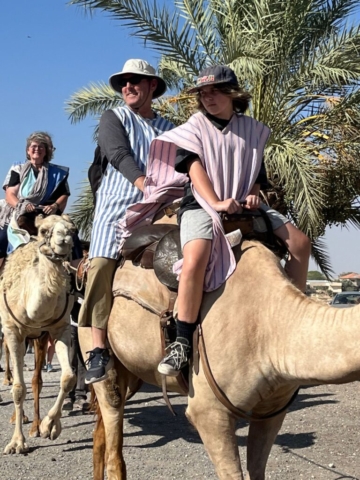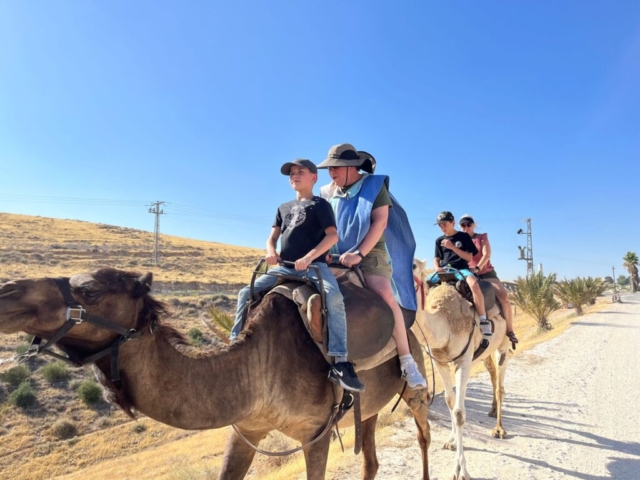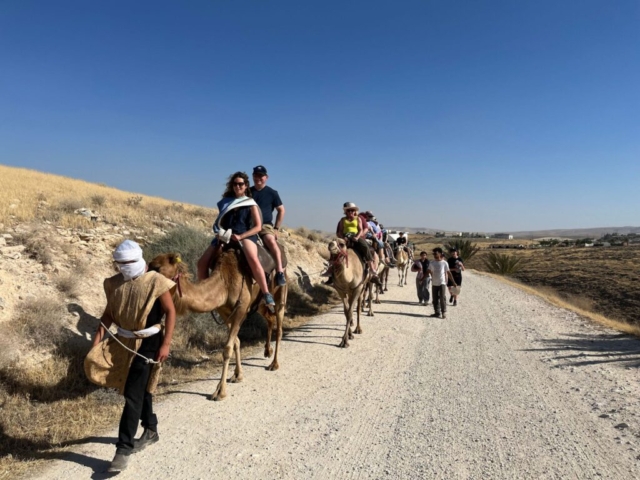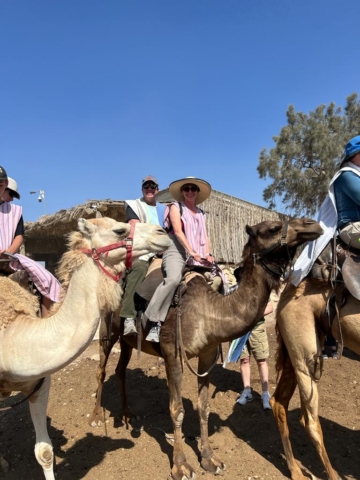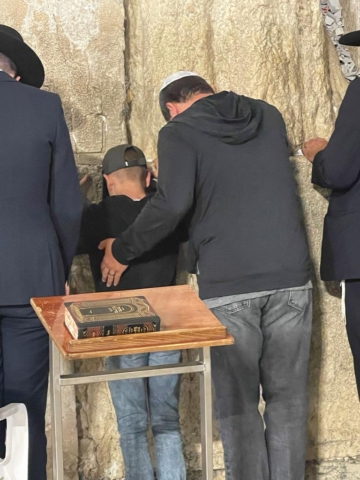Out of the Depths I Call
These words are quote from Psalm 130 and speak of the anguish of having no one to remember us when we are gone. This happened at a tragic scale during some of the darkest years of our people, during the years of the Holocaust
Yad Vashem
Part of the modern story of the Jewish people passes through the dark tunnel of the Second World War and the Holocaust. We are still feeling the emotional aftermath of those years of horror and will for decades to come. This morning, we explored the story itself through the preeminent Holocaust museum in the world, Yad Vashem. The name Yad Vashem comes from Isaiah and means a “memorial and a name” and refers to the museum’s mission of both telling the story of the Holocaust itself, but also of remembering all of those who have no one else to remember them.
 The structure itself is built into the actual mountain with both ends sticking out into the air. As we entered, we saw images of Jewish life in Europe that was lost in subsequent years. The museum then carries us through the different stages which led to the Nazi Holocaust including dehumanization, concentration, and extermination.The museum exhibit ends in a room with the notebooks containing the names of all of the people who have been killed in the Holocaust. Unfortunately, some of those shelves remain empty because thee is no one to remember them, and so we maintain empty shelves with empty books and continue to tell their stories.
The structure itself is built into the actual mountain with both ends sticking out into the air. As we entered, we saw images of Jewish life in Europe that was lost in subsequent years. The museum then carries us through the different stages which led to the Nazi Holocaust including dehumanization, concentration, and extermination.The museum exhibit ends in a room with the notebooks containing the names of all of the people who have been killed in the Holocaust. Unfortunately, some of those shelves remain empty because thee is no one to remember them, and so we maintain empty shelves with empty books and continue to tell their stories.
For those who had been to Yad Vashem decades ago and remember the focus on the pictures of horror, that is not the emphasis of the updated museum, rather it focuses on the decisions people make that leads to or responds to the destruction of a people.
For me most arresting was the children’s memorial which used to be a single candle in a large, cavernous room. In this updated version (now almost 20 years old), a single candle is reflected in a series of mirrors that are continually bounced around until it feels as though the single light becomes a million lights filling the room. Just as a single light or two can fill a large space, so could the lives of these souls filled up their communities.
We ended with saying kaddish for all those who have no one to say kaddish for them.
Machaneh Yehuda
 From Yad Vashem, we traveled to a vibrant section of Jerusalem, a place called Yad Vashem. This outdoor market was our location for lunch and we, sheep, grazed upon the borekas, falafel, shawarma and more. Several people who had tried and disliked the delicacy, halva, changed their minds when tasting what true halva can be like.
From Yad Vashem, we traveled to a vibrant section of Jerusalem, a place called Yad Vashem. This outdoor market was our location for lunch and we, sheep, grazed upon the borekas, falafel, shawarma and more. Several people who had tried and disliked the delicacy, halva, changed their minds when tasting what true halva can be like.
Genesis Land
We then traveled to a place called Genesis Land located in the hills of Judea. We rode on camels to the  tent of our ancestor, Abraham, who famous for his hospitality and generosity to others. He described the importance of hospitality in his own life and how he, and his nephew, Lot, divided up the land itself. While the “performance” of “Abraham” might be a little hokey, it was powerful to experience how our ancient ancestors traveled, and the actual places that are mentioned in the bible itself. The terrain is harsh and unforgiving, but the hospitality of neighbors like Abraham allow the entire community to survive.
tent of our ancestor, Abraham, who famous for his hospitality and generosity to others. He described the importance of hospitality in his own life and how he, and his nephew, Lot, divided up the land itself. While the “performance” of “Abraham” might be a little hokey, it was powerful to experience how our ancient ancestors traveled, and the actual places that are mentioned in the bible itself. The terrain is harsh and unforgiving, but the hospitality of neighbors like Abraham allow the entire community to survive.
Lights and Stones
 Finally, several people went to see a spectacular light show that takes place on David’s Tower, one of the strongholds built into the walls of the Old City. In this sound and light show, the entire outer wall of David’s tower and beyond are transformed into canvas that conveys both history and the dazzling hope for the future. Others of our group made their way to the Western Wall to feel the enormity of the stones that carry overwhelming religious significance.
Finally, several people went to see a spectacular light show that takes place on David’s Tower, one of the strongholds built into the walls of the Old City. In this sound and light show, the entire outer wall of David’s tower and beyond are transformed into canvas that conveys both history and the dazzling hope for the future. Others of our group made their way to the Western Wall to feel the enormity of the stones that carry overwhelming religious significance.
Tomorrow we will be celebrating the B’nai Mitzvah of several of the people on the tour, both child and adult, and we will get to know some of the oldest stones of the city even better.













